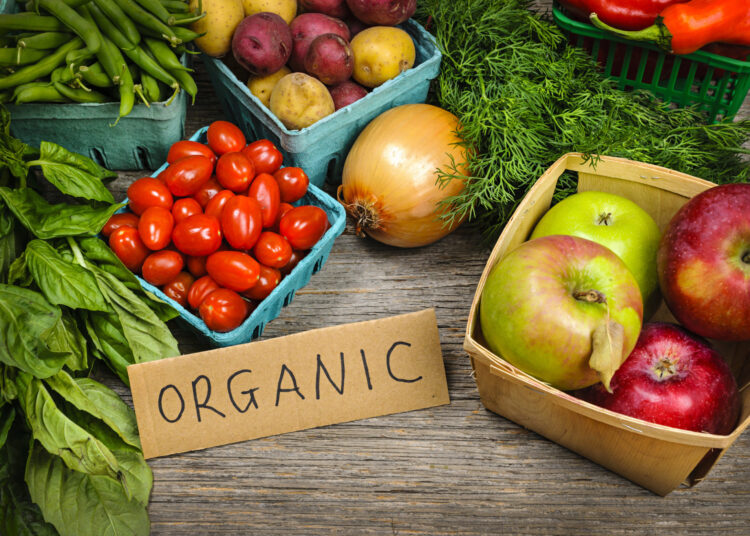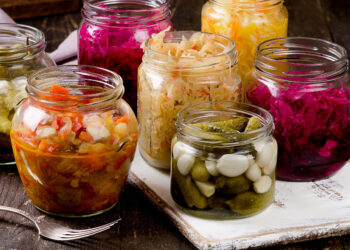Pesticide-Free Living: How Organic Food Protects Your Health
Discover how choosing organic can significantly reduce your exposure to harmful chemicals and support a healthier lifestyle.
1. The Stark Reality of Pesticide Exposure
Research increasingly highlights the critical health advantages of organic food, primarily the significant reduction in exposure to pesticides and heavy metals. Studies reveal that individuals who consume organic foods face a lower risk of cardiometabolic disorders like obesity and diabetes, directly linked to the decreased presence of toxic agricultural inputs. In contrast, conventional farming methods often rely on pesticides associated with serious health issues.
2. Quantifying the Organic Advantage
By mid-2025, it’s estimated that organic agriculture will slash synthetic pesticide use by as much as 98% compared to traditional farming. Friends of the Earth research indicates that simply transitioning to an organic diet can decrease a person’s pesticide burden by up to 95% within just one week.
3. Environmental Benefits of Organic Practices
The shift towards organic practices extends beyond individual health, contributing significantly to global sustainability. Organic farming reduces water pollution by up to 75% and fosters biodiversity by supporting more robust pollinator populations and soil microbes, with species counts averaging 30% higher per hectare. The following table highlights the projected differences between organic and conventional agriculture in 2025:
| Advantage | Organic Agriculture (Estimated 2025) | Conventional Agriculture (2025) |
|---|---|---|
| Sustainability | 98% lower synthetic chemical use, 75% less water pollution | High synthetic chemical use, Significant water contamination |
| Health | ~75% lower pesticide residues, GMO-free | High pesticide residues, potential GMO presence |
| Biodiversity | Avg. 30% more species per hectare, Robust pollinator populations | Monocultures, lower biodiversity |
| Economic Benefits | 20–40% price premium, Lower input costs (over time) | Standard commodity prices, Variable input costs |
Data source: Farmonaut “4 Advantages Of Organic Agriculture For 2025” July 16, 2025
4. Economic Incentives for Farmers
Organic methods also provide economic incentives for farmers through market premiums, rewarding sustainable practices and supporting resilient communities. This creates a beneficial cycle where environmentally conscious choices are also economically viable.
From Farm to Table: The Journey of Eco-Friendly Produce
Explore the rise of organic farming and its impact on sustainable food systems, highlighting the dedication to eco-friendly practices.
1. The Growth of Organic Farming in the UK
Organic farming is steadily becoming a more significant part of sustainable food systems in the UK. In 2024, the total land managed organically reached 503 thousand hectares. While there was a slight dip in fully converted organic land, the overall trend indicates a positive trajectory for organic agriculture.
2. Regional Distribution of Organic Farmland
England accounts for nearly sixty percent of all organic farmland in the UK. This concentration highlights the regional commitment to sustainable agriculture and the varying adoption rates of organic practices across different parts of the country.
3. Consumer Demand and Policy Support
The increasing area dedicated to organic farming reflects a growing consumer demand for eco-friendly produce, coupled with consistent policy support. This dual influence is crucial in promoting the expansion of organic agriculture and ensuring its viability.
4. Trends in Land Conversion
Efforts to convert conventional farms to certified organic production are ongoing, demonstrating a commitment to sustainable practices within British agriculture. The following table illustrates the changes in land use over the past decade.
5. The Future of Organic Agriculture
As awareness of environmental sustainability and health benefits grows, both producers and consumers are increasingly making sustainable choices “from farm to table.” This ongoing shift suggests a promising future for organic agriculture, driven by informed decisions and a collective move towards more sustainable food systems.
Decoding Non-GMO Labels: What Do They Really Mean?
Navigating the world of food labels can be tricky, but understanding non-GMO and bioengineered distinctions is now easier thanks to recent regulatory updates.
1. The Push for Transparency
The National Bioengineered Food Disclosure Law has brought significant changes to food labeling, especially for those of us seeking organic and sustainable options. This law led to the creation of a federal standard, ensuring that foods containing genetically modified ingredients are clearly labeled, giving consumers more power to make informed choices.
2. Standardized Labels Explained
Since June 2025, certain products are required to carry specific labels if they contain bioengineered content. These labels range from straightforward text to QR codes or symbols, offering different ways for consumers to access information. The goal is to provide clarity and consistency in how bioengineered foods are identified.
3. Examples in Practice
Let’s look at some specific examples. Certain types of sugarcane and updated varieties of summer squash now fall under these labeling requirements. If these products contain bioengineered ingredients, they must display a BE label.
| Food Category | Status Under National Bioengineered Food Disclosure Standard (NBFDS) | Labeling Requirement | Year of Enforcement | Example Label Text |
|---|---|---|---|---|
| Sugarcane (specific varieties) | Added to BE List | Must display BE label if bioengineered variety present | June 2025 | “Bioengineered food” or similar wording |
| Summer squash (updated varieties) | Listing adjusted | Must display BE label if bioengineered variety present | June 2025 | “Contains a bioengineered food ingredient” |
Data source: USDA Agricultural Marketing Service – National Bioengineered Food Disclosure Standard Update as summarized by The FruitGuys Blog July 7, 2025
4. Ongoing Updates and Consumer Trust
The USDA actively reviews and updates its list of bioengineered foods each year. This reflects the ever-evolving landscape of agricultural biotechnology. These measures are vital for maintaining consumer trust in organic labeling systems and upholding the integrity of sustainability claims within the broader context of eco-friendly eating.
Eating with the Seasons: The Sustainable Choice for Freshness
Explore how embracing seasonal eating boosts freshness and supports a healthier, more sustainable lifestyle.
1. The Rise of Organic Food
The popularity of organic food is soaring as consumers increasingly prioritize health, transparency, and sustainability. In 2024, U.S. organic food sales hit a remarkable $110.75 billion, marking a significant milestone in the food industry. This surge highlights a growing awareness of the benefits associated with organic produce.
2. Organic Food’s Market Share
Organic options are no longer niche; they’re becoming a mainstream choice. The numbers speak for themselves: organic food now accounts for over 10% of the total U.S. food retail market. This demonstrates a considerable shift in consumer preferences and purchasing habits.
3. Driving Factors Behind the Trend
Several factors are fueling the growth of the organic sector. Consumers are seeking healthier options and are drawn to the transparency and sustainability that organic farming practices offer. Events like the Organic Produce Summit underscore the importance of organic produce, such as fresh potatoes and onions, in driving market expansion.
4. Seasonal Eating and Sustainability
Eating seasonally and locally is a key aspect of this trend. This approach not only ensures freshness and nutrient density but also reduces the environmental impact associated with long-distance transportation and storage. Embracing seasonal eating strengthens local economies and supports ecological resilience. The table below illustrates the market share of organic food in the U.S. food retail market:
| Category | 2024 Sales (USD Billion) | % of Total U.S. Food Retail Market |
|---|---|---|
| U.S. Natural Organic Food (Total) | 110.75 | >10% |
| Total U.S. Food Retail Market | 1,073 | 100% |
Data source: Retail Insights® data, reported at the Organic Produce Summit via Fresh Solutions Network® June/July 2025
5. The Broader Impact
Sustainable sourcing through seasonal consumption is beneficial not just for individual health but also for the planet. By reducing reliance on long-distance supply chains and chemical inputs common in conventional agriculture, we can foster a more resilient and environmentally friendly food system.
Beyond Organic: Exploring Regenerative Agriculture Practices
Discover how regenerative agriculture is transforming food systems by prioritizing soil health and ecosystem restoration, moving beyond traditional organic methods.
1. The Rise of Regenerative Agriculture
Regenerative agriculture is gaining momentum as a vital approach to sustainable food systems, especially in the US and UK. Unlike practices that simply minimize harm, regenerative methods actively work to restore soil health and improve ecosystem services. This holistic approach focuses on creating a positive environmental impact.
2. Core Regenerative Practices
Key practices in regenerative agriculture include cover cropping, reduced tillage, and crop diversification. These methods are proving effective in increasing soil organic matter and boosting microbial diversity. Some studies show that diverse crop rotations can increase soil organic matter by up to 20% and significantly improve resilience to climate change compared to monocultures.
3. North America’s Market Leadership
North America is currently at the forefront of the regenerative agriculture market. With a projected market size of $9.2 billion in 2025, the region accounts for a significant portion of the global market. This growth is fueled by increasing investments in carbon credit markets and supportive initiatives from the USDA.
4. Growth Projections and Key Segments
The North American regenerative agriculture market is expected to continue its rapid expansion. The integration of Agri-PV systems is anticipated to be the fastest-growing segment, demonstrating the innovative approaches being adopted. The following table illustrates the market size, share, and growth projections for North America:
| Region | Market Size (2025, USD Billion) | Market Share (2025) | Projected Market Size (2030, USD Billion) | CAGR (2025–2030) | Fastest-Growing Segment | Segment CAGR |
|---|---|---|---|---|---|---|
| North America | 9.2 | 37% | 18.3 | 14.75% | Agri-PV Integration | 21.4% |
Data source: Mordor Intelligence “Regenerative Agriculture Market Size, Growth Trends & Forecast” July 4, 2025
Q&A
Question 1: What are the key health benefits associated with consuming organic food, as highlighted in the provided text?
Answer: Consuming organic food significantly reduces exposure to pesticides and heavy metals, lowering the risk of cardiometabolic disorders like obesity and diabetes. Studies show a potential reduction in pesticide burden of up to 95% within a week of switching to an organic diet. This is in contrast to conventional farming, which often uses pesticides linked to serious health problems.
Question 2: What are the projected environmental advantages of organic agriculture by 2025, compared to conventional methods?
Answer: By 2025, organic agriculture is projected to reduce synthetic pesticide use by 98%, water pollution by 75%, and foster biodiversity with an average 30% higher species count per hectare compared to conventional agriculture. Conventional farming, on the other hand, is associated with high synthetic chemical use and significant water contamination, along with lower biodiversity due to monocultures.
Question 3: How does the National Bioengineered Food Disclosure Law impact food labeling and consumer choices?
Answer: The law mandates clear labeling of foods containing genetically modified ingredients, giving consumers more information to make informed choices. Since June 2025, products containing bioengineered ingredients must display specific labels (text, QR codes, or symbols), ensuring transparency and consistency in identifying such foods. Examples include sugarcane and summer squash varieties.
Question 4: What factors are driving the growth of the organic food market in the US, and what is its current market share?
Answer: The increasing popularity of organic food is driven by consumer demand for healthier, more transparent, and sustainable options. In 2024, US organic food sales reached $110.75 billion, representing over 10% of the total US food retail market. This growth reflects a significant shift towards healthier and more sustainable food choices.













